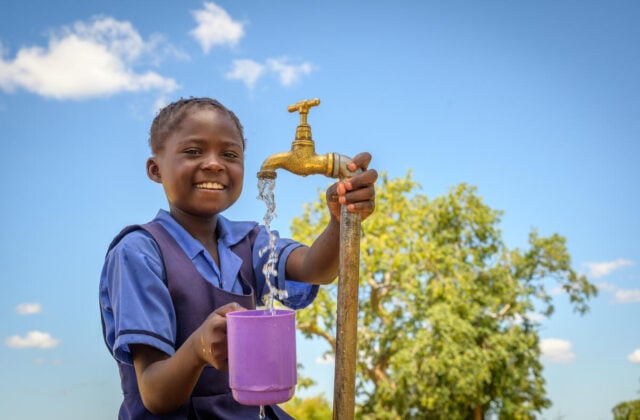Now that I have a Fitbit, I’m acutely aware of just how little ground I cover on my own two feet every day. Sitting in my car on the way to work, sitting at my desk, and sitting in meetings doesn’t do much for my step count. (They say sitting is the new smoking!)
Actually, my wife, Reneé, and I love to take walks, and we do it every chance we get, walking in parks or around our neighborhood, wearing our sturdy-soled athletic shoes and hats, sunglasses, or jackets as the weather demands.
How different things are in rural areas of the developing world, where car ownership is rare and public transportation erratic. Walking isn’t something people want to do for exercise but have to do to get around. They must walk everywhere — school, farm fields, the market, church — and do so rain or shine. I’ll never forget my first trip to rural Kenya. As our Land Cruiser tooled along on roads out in the middle of nowhere, I was amazed to see people walking, many in flimsy sandals, some toting heavy loads, midway on their multi-mile trek.
One of the most urgent reasons to walk in rural Africa, especially for women and girls, is to collect water for drinking and bathing. The average distance they must go to a water source — and not usually a clean one — is 6 kilometers, about 3.7 miles. Since it’s impossible for a woman or child to carry all the water to meet her family’s daily needs, she must repeat the trip a few times every day. See photos and read about what this is like for 5-year-old Cheru, a girl in Kenya.
Poor access to clean water is something World Vision is working with a vengeance to solve. We’ve accelerated the progress of our water work so that we’re reaching one new person every 10 seconds — with a commitment to reach everyone, everywhere we work, by 2030. Children like Cheru deserve our best efforts.
You can help by participating in our Global 6K for Water, which enables you to walk — or run, if you’re so inclined — in solidarity with those who lack clean water. But don’t worry, we don’t require that you heft a 50-pound jug of water as most African women have to.
There’s greater significance to this activity than just empathy. World Vision is providing clean water in communities where we serve for a decade or more, working closely with local leaders and families, investing in their lives, and inviting our own hearts to be transformed alongside theirs. A good metaphor for this is “walking with the poor,” and it’s our philosophy of good development.
Former World Vision vice president and Fuller Theological Seminary professor Bryant L. Myers (who actually wrote the book Walking with the Poor) called this relational approach a “kingdom tool,” a way to emulate Christ, who walked in sandals among us.
Myers wrote, “We are to come closer, to walk with those who are suffering, left out, or devalued. We are to work with the poor and excluded as they seek a better life and treatment fitting those made in the image of God.”
When you partner with World Vision, you are walking with the poor, too. Mothers, fathers, and children feel your love and support across the miles. And with that comes a sense of God’s love. Knowing they’re not alone in their struggles lightens their load.
World Vision U.S. President Rich Stearns is the author of The Hole In Our Gospel and Unfinished. Follow him at twitter.com/richstearns.

